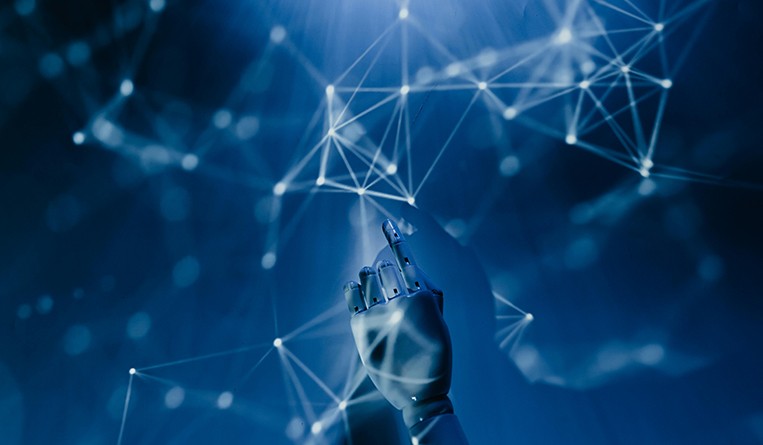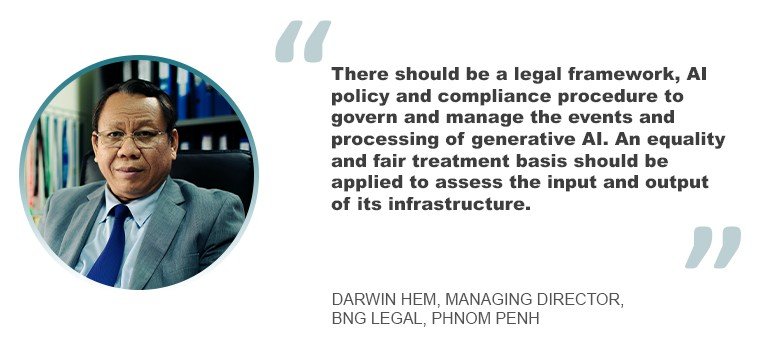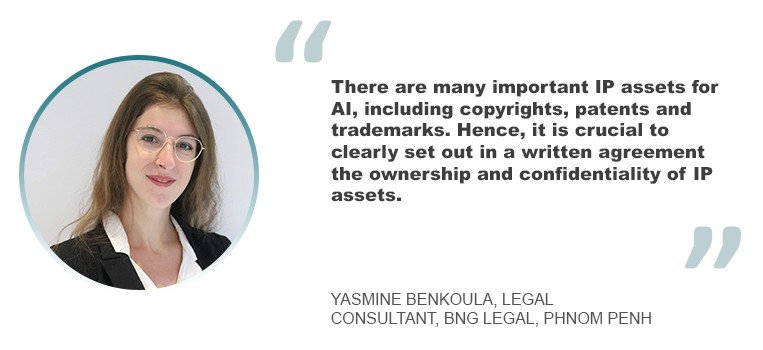Navigating the intersection of generative AI and IP
31 January 2024

While the potential of generative AI is immense, the challenges and risks are not far behind if used without proper caution. Excel V. Dyquiangco discusses the approach to mitigate these with the help of experts.
Generative AI, driven by powerful machine learning algorithms, has ushered in a new era where AI systems can autonomously produce a wide array of creative works – from music compositions and visual art to written content. This transformative capability has opened exciting possibilities for industries and individuals, but it has also introduced a labyrinth of challenges in protecting intellectual property rights in this rapidly evolving technological landscape.
As generative AI continues to blur the lines between human and machine creativity, the need for protective measures becomes increasingly pressing. This complex interplay between AI-generated content and intellectual property rights demands a thoughtful examination of the steps individuals and organizations must take to safeguard their creative outputs.
This has led Asia-Pacific countries such as Singapore to address the issue. For example, in June 2023, Singapore’s Infocomm Media Development Authority (IMDA) issued a discussion paper on Generative AI: Implications for Trust and Governance. The paper sought to provide guiding principles for organizations to implement AI responsibly. The IMDA and Personal Data Protection Commission of Singapore (PDPC) have also issued a Model AI Governance Framework which provides guidance to organizations looking to develop or deploy AI solutions.
According to Geraldine Tan, director at Amica Law in Singapore, generative AI has been a game changer. Its potential benefits for businesses are immense. “However, the development of generative AI is still evolving and there are challenges and risks associated with its use that businesses should take note of,” she said. “Some of the key challenges and risks, with a focus on the protection of trade secrets and IP, and mitigation strategies are confidentiality and data protection risks, loss of control and security over data, and other IP risks. Some of the training data may include proprietary material obtained through web scraping. If the AI-generated content closely resembles existing copyrighted material, trademarks, or IP, this may potentially lead to an IP infringement claim. There may also be risks of plagiarism and false attribution.”

She added: “Any information keyed into a generative AI tool by a user is stored and may become part of the AI’s learning dataset. It may then be disclosed to other users as part of the generative AI tool’s responses to other users. Sensitive data, such as confidential information or personal data, may inadvertently be disclosed or leaked by a company if such data is keyed into the AI tool by an employee, as we have learned in the widely publicized Samsung case in South Korea. Where such data involves the trade secrets or confidential information of the company, this data leakage may result in a loss of legal protection for such trade secrets or confidential information – and a loss of its competitive advantage – if such information is accessed by its competitors.”
Moreover, if such data involves personal data or confidential information of a third party, this may expose the company to legal liability for a data breach under data protection laws, such as the Singapore Personal Data Protection Act (PDPA), or a confidentiality breach claim, she said.
Mudit Kaushik, a partner at Verum Legal in Delhi, echoed Tan’s concerns, highlighting the inherent difficulty in controlling AI systems compared to human employees. This makes it crucial for businesses to implement robust access controls and encryption measures, especially in industries where trade secrets are paramount, such as technology, manufacturing and pharmaceuticals.

Kaushik outlined a multifaceted approach to mitigate these risks, emphasizing stringent access controls, encryption of sensitive data, continuous monitoring of AI systems and comprehensive employee training programs. He also said: “Staying informed about the evolving landscape of AI technologies is crucial. Businesses should continuously evaluate their trade secret protection strategies to adapt to new AI developments. Collaborating with legal experts well-versed in IP and AI can provide invaluable guidance in navigating these complex challenges.”
Contractual agreements
Unlike in Singapore, there has not been any initiative in Cambodia to develop the legal framework yet in the context of Generative AI. Its legal framework, however, consists of the following: Law on Copyright and Related Rights in 2003; Law on the Patents, Utility Model Certificates, and Industrial Designs in 2003; and Law concerning Marks, Trade Names and Acts of Unfair Competition in 2002.

Darwin Hem, principal partner at BNG Legal in Phnom Penh, added that there is some development on the Law about Trade Secret, but it might take some time until the law-making process is completed, and the promulgating date of the law on trade secrets can be confirmed.
“There should be a legal framework, AI policy and compliance procedure to govern and manage the events and processing of the generative AI. An equality and fair treatment basis should be applied to assess the input and output of generative AI’s infrastructure on the situation to disclose reference, consent and acceptance on the original creator of those inputs or data on which the generative AI’s infrastructure shall be developed and produced as the outputs,” he said.
His colleague, Keopichchenda Long, a senior associate at the same firm, said that, indeed, generative AI has become an effective tool to assist humans with their day-to-day work basis.
“Many industries in Cambodia, including but not limited to medicine, education, and finance have been implementing AI assistance in their daily work,” she said. “Although many countries, including Cambodia, currently lack legislation or policies to govern AI, contractual agreements are currently an effective key player in governing relationships between businesses and AI developers to protect their intellectual property and trade secrets.”

When it comes to engagement with AI developers, besides the basic elements of the contract, she said, it is also essential to look at the rights and obligations of the contracting parties, especially the ownership, confidentiality, indemnity, and liability clauses. Each contract shall be tailored according to the different needs of the parties.
However, Yasmine Benkoula, a legal consultant at the same firm, said that it is difficult for companies or individuals to find a balance between harnessing the benefits of generative AI and ensuring the protection of their intellectual property and trade secrets without human-centred policies in place to govern the area.

“Currently, there is no law on trade secrets nor is there any law on confidential information in Cambodia,” she said. “Therefore, there are limited options for companies or individuals to strike such a balance. One of which is to rely on well-drafted contractual agreements such as non-disclosure agreements. Furthermore, there are many other important IP assets for AI, including copyrights, patents and trademarks. Hence, it is crucial to set out in a written agreement the ownership and confidentiality of copyrights and other IP assets.”
Staying up-to date in the current landscape
With the rapid advancement of AI technologies, IP lawyers in Asia-Pacific recommend staying updated on the evolving legal landscape and ensuring that businesses are adequately protected. Kaushik enumerated some strategies to do this.
Continuous learning and professional development are fundamental in such a fast-paced field. Keeping updated on legal developments through seminars, workshops, and conferences focused on AI and IP law is invaluable. Participation in associations like the Asian Patent Attorneys Association (APAA) and the International Trademark Association (INTA) fosters networking opportunities and knowledge exchange.
Further, building strong relationships with clients is essential. “By maintaining open communication and staying attuned to the unique needs and challenges faced by businesses operating in the AI sector, individuals and organizations can adapt their IP strategies to ensure effective protection,” said Kaushik.
Lastly, he recommends interdisciplinary collaboration. Partnering with technical experts forms a synergy between legal and technological realms. This collaboration enables a deeper understanding of AI complexities, aiding in the development of robust legal strategies that align with technological advancements.






